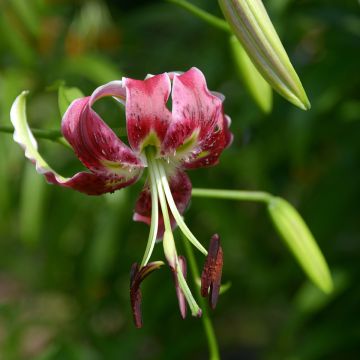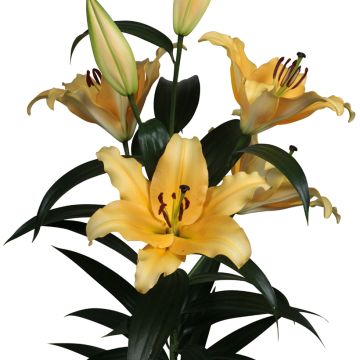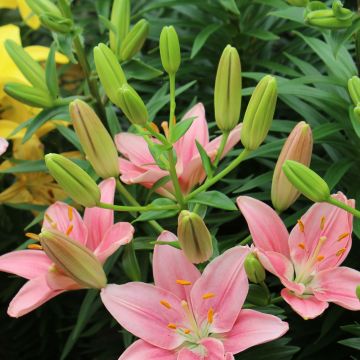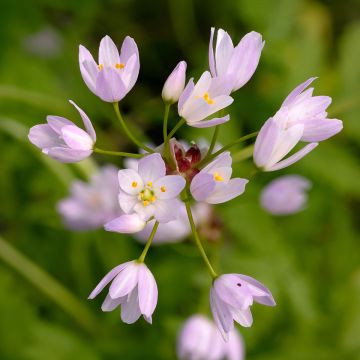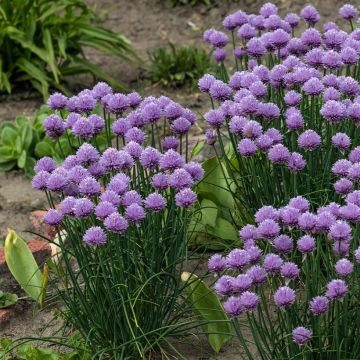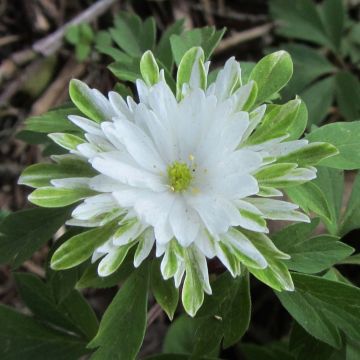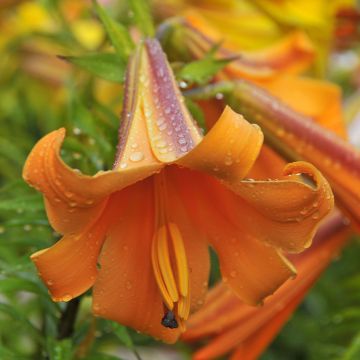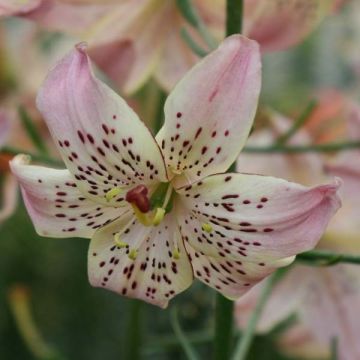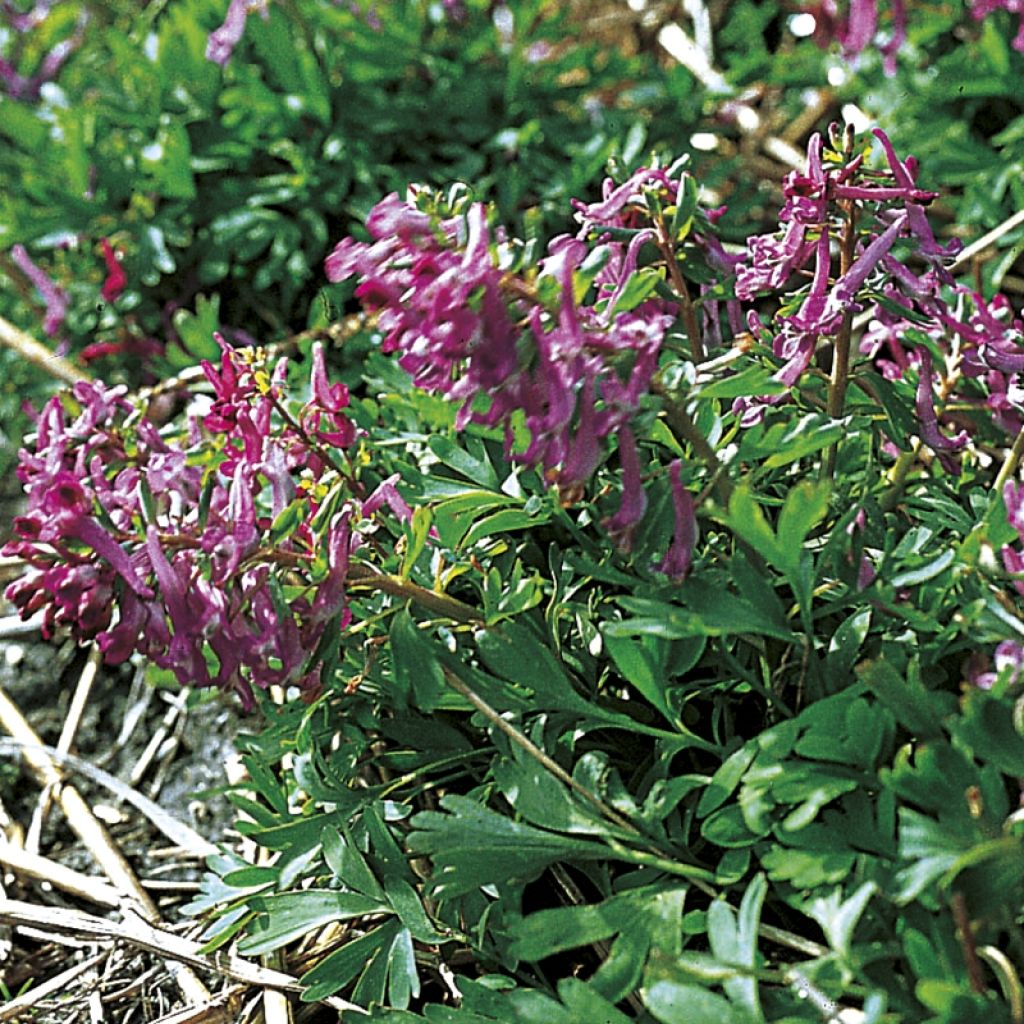

Corydalis pumila - Corydale naine
Corydalis pumila
Corydalis pumila
Fumewort
This plant carries a 6 months recovery warranty
More information
We guarantee the quality of our plants for a full growing cycle, and will replace at our expense any plant that fails to recover under normal climatic and planting conditions.
From €5.90 for pickup delivery and €6.90 for home delivery
Express home delivery from €8.90.
Does this plant fit my garden?
Set up your Plantfit profile →
Description
Corydalis pumila, also known as the dwarf corydalis, is a modest botanical species, little known to gardeners. It thrives in the crevices of limestone rocks, mainly in deciduous forests. It is a small, simple, and hardy perennial and bulbous plant. It bears small tubular spurred flowers in varying colours, from white to lilac and purplish-pink, on pale green foliage reminiscent of that of alfalfa. Plant the bulbs in a sunny rockery, among tulips or botanical crocuses, for example.
Corydalis pumila is a small bulbous plant native to Europe. This wild species is present in Albania, Austria, Corsica, Czechoslovakia, Denmark, Germany, Greece, Hungary, Italy, Norway, Poland, Romania, Sardinia, Sweden, and Yugoslavia. It belongs to the Papaveraceae family, just like poppies. This plant has a good level of hardiness in rocky soil. It develops its foliage in spring. Its light green leaves are divided into 3 narrow, cut-out and ovate segments. They measure about 4cm (2in) long. The plant reaches a height of about 15cm (6in) and a width of 30cm (12in) at maturity. Flowering occurs in spring, from March to May depending on the climate. It takes the form of small upright clusters composed of 3 to 6 tube-shaped flowers, 1 to 2cm (1in) long, in varying colours. They are terminated by 2 lips open on an almost white throat and equipped with a slender, downward-curved spur. The flowering is followed by the formation of elongated capsule-shaped fruits called siliques. Corydalis pumila is hermaphroditic and entomogamous (its pollination is done by insects). The foliage disappears in summer.
The dwarf corydalis is primarily a plant for alpine or mountain rockeries. It fears poorly drained or acidic soils. It can be planted with other alpine perennials, such as pasque flowers, cat's ears, Arabis caucasica, swallowwort gentian, alpine erineus, or even edelweiss. You can also plant this corydalis above semi-shaded walls.
Report an error about the product description
Plant habit
Flowering
Foliage
Botanical data
Corydalis
pumila
Fumariaceae - Papaveraceae
Fumewort
Central Europe
Other Spring bulbs A to Z
Planting and care
Corydalis pumila should be planted in non-burning sun or partial shade, in a pocket of rocky soil. It tolerates cold and snow well, but dislikes stagnant water. Summer drought is well tolerated in mountain climates.
Planting period
Intended location
Care
This item has not been reviewed yet - be the first to leave a review about it.
Haven't found what you were looking for?
Hardiness is the lowest winter temperature a plant can endure without suffering serious damage or even dying. However, hardiness is affected by location (a sheltered area, such as a patio), protection (winter cover) and soil type (hardiness is improved by well-drained soil).

Photo Sharing Terms & Conditions
In order to encourage gardeners to interact and share their experiences, Promesse de fleurs offers various media enabling content to be uploaded onto its Site - in particular via the ‘Photo sharing’ module.
The User agrees to refrain from:
- Posting any content that is illegal, prejudicial, insulting, racist, inciteful to hatred, revisionist, contrary to public decency, that infringes on privacy or on the privacy rights of third parties, in particular the publicity rights of persons and goods, intellectual property rights, or the right to privacy.
- Submitting content on behalf of a third party;
- Impersonate the identity of a third party and/or publish any personal information about a third party;
In general, the User undertakes to refrain from any unethical behaviour.
All Content (in particular text, comments, files, images, photos, videos, creative works, etc.), which may be subject to property or intellectual property rights, image or other private rights, shall remain the property of the User, subject to the limited rights granted by the terms of the licence granted by Promesse de fleurs as stated below. Users are at liberty to publish or not to publish such Content on the Site, notably via the ‘Photo Sharing’ facility, and accept that this Content shall be made public and freely accessible, notably on the Internet.
Users further acknowledge, undertake to have ,and guarantee that they hold all necessary rights and permissions to publish such material on the Site, in particular with regard to the legislation in force pertaining to any privacy, property, intellectual property, image, or contractual rights, or rights of any other nature. By publishing such Content on the Site, Users acknowledge accepting full liability as publishers of the Content within the meaning of the law, and grant Promesse de fleurs, free of charge, an inclusive, worldwide licence for the said Content for the entire duration of its publication, including all reproduction, representation, up/downloading, displaying, performing, transmission, and storage rights.
Users also grant permission for their name to be linked to the Content and accept that this link may not always be made available.
By engaging in posting material, Users consent to their Content becoming automatically accessible on the Internet, in particular on other sites and/or blogs and/or web pages of the Promesse de fleurs site, including in particular social pages and the Promesse de fleurs catalogue.
Users may secure the removal of entrusted content free of charge by issuing a simple request via our contact form.
The flowering period indicated on our website applies to countries and regions located in USDA zone 8 (France, the United Kingdom, Ireland, the Netherlands, etc.)
It will vary according to where you live:
- In zones 9 to 10 (Italy, Spain, Greece, etc.), flowering will occur about 2 to 4 weeks earlier.
- In zones 6 to 7 (Germany, Poland, Slovenia, and lower mountainous regions), flowering will be delayed by 2 to 3 weeks.
- In zone 5 (Central Europe, Scandinavia), blooming will be delayed by 3 to 5 weeks.
In temperate climates, pruning of spring-flowering shrubs (forsythia, spireas, etc.) should be done just after flowering.
Pruning of summer-flowering shrubs (Indian Lilac, Perovskia, etc.) can be done in winter or spring.
In cold regions as well as with frost-sensitive plants, avoid pruning too early when severe frosts may still occur.
The planting period indicated on our website applies to countries and regions located in USDA zone 8 (France, United Kingdom, Ireland, Netherlands).
It will vary according to where you live:
- In Mediterranean zones (Marseille, Madrid, Milan, etc.), autumn and winter are the best planting periods.
- In continental zones (Strasbourg, Munich, Vienna, etc.), delay planting by 2 to 3 weeks in spring and bring it forward by 2 to 4 weeks in autumn.
- In mountainous regions (the Alps, Pyrenees, Carpathians, etc.), it is best to plant in late spring (May-June) or late summer (August-September).
The harvesting period indicated on our website applies to countries and regions in USDA zone 8 (France, England, Ireland, the Netherlands).
In colder areas (Scandinavia, Poland, Austria...) fruit and vegetable harvests are likely to be delayed by 3-4 weeks.
In warmer areas (Italy, Spain, Greece, etc.), harvesting will probably take place earlier, depending on weather conditions.
The sowing periods indicated on our website apply to countries and regions within USDA Zone 8 (France, UK, Ireland, Netherlands).
In colder areas (Scandinavia, Poland, Austria...), delay any outdoor sowing by 3-4 weeks, or sow under glass.
In warmer climes (Italy, Spain, Greece, etc.), bring outdoor sowing forward by a few weeks.

































